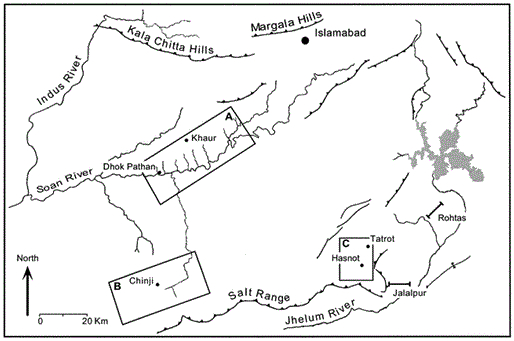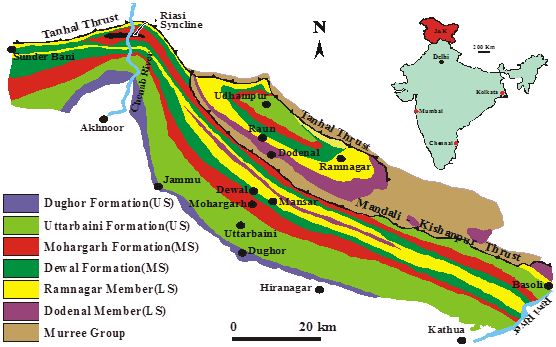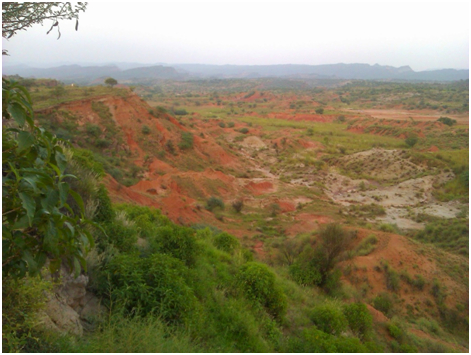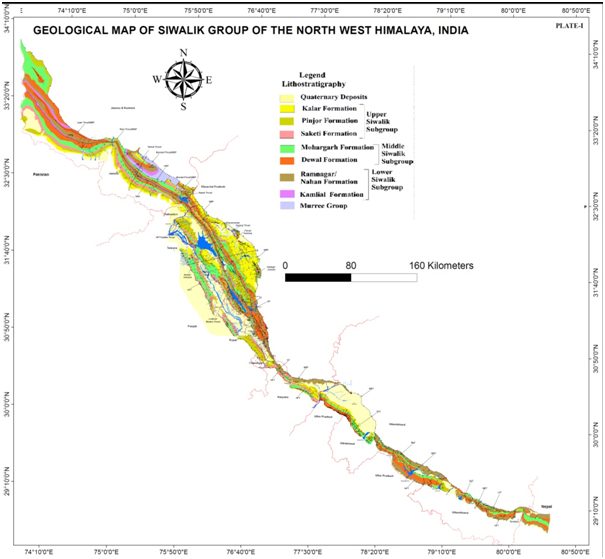Chinji Fm
Type Locality and Naming
Siwalik Gr. – lower formation in the Kohat-Margala Province (Ko-MP and the Trans Indus-Potwar Province (TrI-PP). Holotype section: South of Chinji village, Talagang District. Author: G. E. Pilgrim, 1913. Reference section: None.
Lithology and Thickness
Sandy claystone. The formation consists of red clay and siltstone with subordinate ash grey or brownish grey sandstone. Thin lenses of conglomerate are also found. However, in Shinghar Range the formation is mainly sandstone with subordinate clay beds.
Thickness: 150-1,200 m (812- 1,865 m in subsurface). At the type section, it is 700 m thick. It is 1,200 m at Khaur, 600 m at Shakardarra (Hukni section), about 300 m at Rakhi Nallah and 150 m in the Zindapir area of eastern Sulaiman Range. In the subsurface, from east to west in Potwar, it is 812+ m at Adhi-5, 930 m at Dhermund-1, 1,865 m at Dakhni-1. West of Indus River it is 1,643 m thick at Chanda-1.
Relationships and Distribution
Lower contact
Conformably underlain by Kamlial Fm with a sharp contact in Trans Indus-Potwar Province (TrI-PP). In Sulaiman Range, it disconformably overlies the Nari Fm
Upper contact
Conformably overlain by Nagri Fm
GeoJSON
Fossils
The formation has yielded abundant vertebrate remains like Sivapithecus indicus, Tilophodon macrognathus, Sivacanthion complicates, Giraffokeryx punjabiensis, Chilotherium intermedium and Sivaelurus chinjiensis.
Age
Depositional setting



 for section R11 with ages of chrons from Harland et al. 1990. b- The Ma.jpg)

